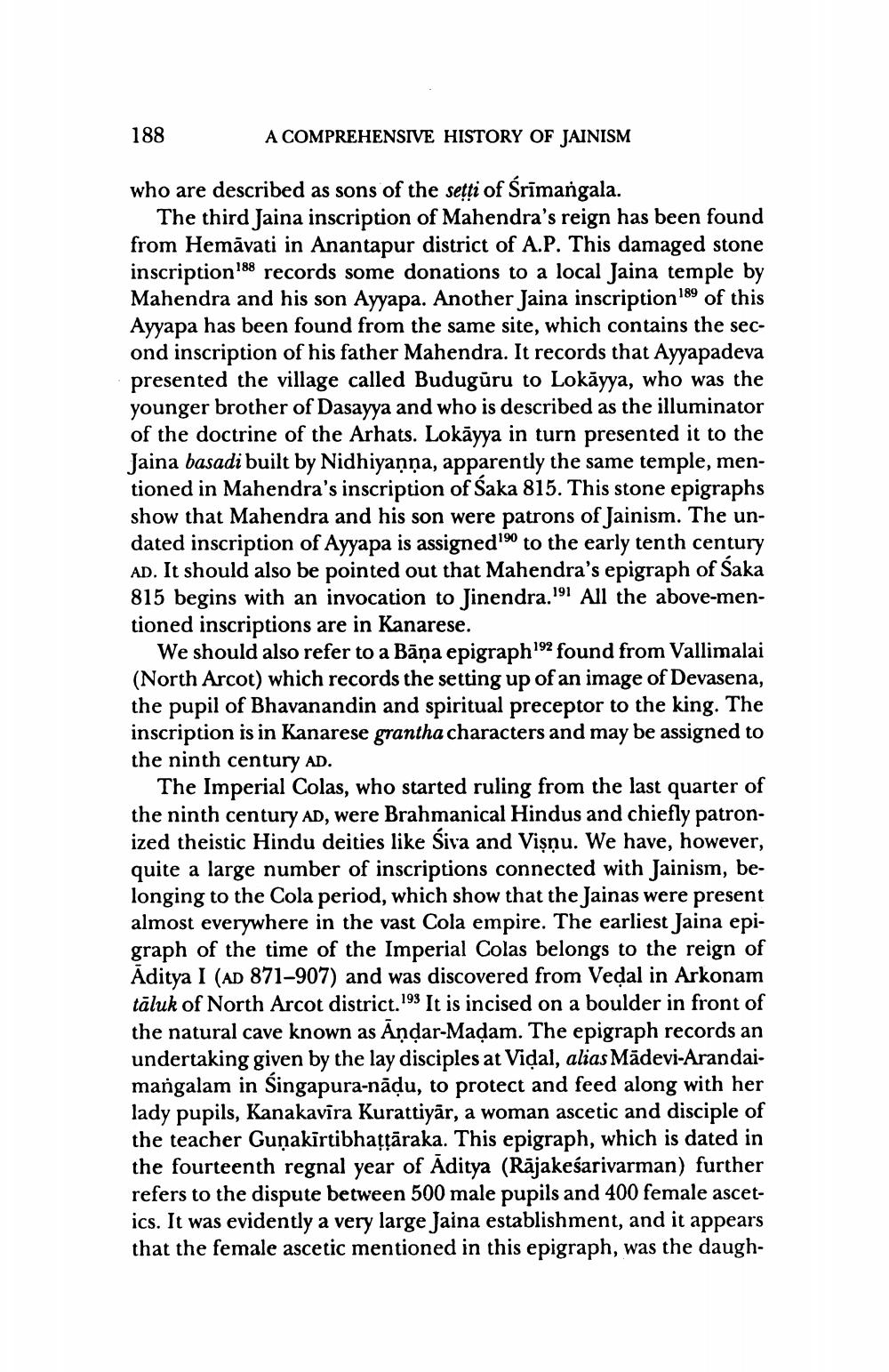________________
188
A COMPREHENSIVE HISTORY OF JAINISM
who are described as sons of the setți of śrīmangala.
The third Jaina inscription of Mahendra's reign has been found from Hemăvati in Anantapur district of A.P. This damaged stone inscription188 records some donations to a local Jaina temple by Mahendra and his son Ayyapa. Another Jaina inscription189 of this Ayyapa has been found from the same site, which contains the second inscription of his father Mahendra. It records that Ayyapadeva presented the village called Budugūru to Lokāyya, who was the younger brother of Dasayya and who is described as the illuminator of the doctrine of the Arhats. Lokāyya in turn presented it to the Jaina basadi built by Nidhiyaņņa, apparently the same temple, mentioned in Mahendra's inscription of Saka 815. This stone epigraphs show that Mahendra and his son were patrons of Jainism. The undated inscription of Ayyapa is assigned190 to the early tenth century Ad. It should also be pointed out that Mahendra's epigraph of Saka 815 begins with an invocation to Jinendra.191 All the above-mentioned inscriptions are in Kanarese.
We should also refer to a Bāņa epigraph 192 found from Vallimalai (North Arcot) which records the setting up of an image of Devasena, the pupil of Bhavanandin and spiritual preceptor to the king. The inscription is in Kanarese grantha characters and may be assigned to the ninth century AD.
The Imperial Colas, who started ruling from the last quarter of the ninth century AD, were Brahmanical Hindus and chiefly patronized theistic Hindu deities like Śiva and Vişnu. We have, however, quite a large number of inscriptions connected with Jainism, belonging to the Cola period, which show that the Jainas were present almost everywhere in the vast Cola empire. The earliest Jaina epigraph of the time of the Imperial Colas belongs to the reign of Aditya I (AD 871-907) and was discovered from Vedal in Arkonam tāluk of North Arcot district.193 It is incised on a boulder in front of the natural cave known as Andar-Madam. The epigraph records an undertaking given by the lay disciples at Vidal, alias Mādevi-Arandaimangalam in Singapura-nādu, to protect and feed along with her lady pupils, Kanakavīra Kurattiyār, a woman ascetic and disciple of the teacher Guņakirtibhațțāraka. This epigraph, which is dated in the fourteenth regnal year of Aditya (Rājakeśarivarman) further refers to the dispute between 500 male pupils and 400 female ascetics. It was evidently a very large Jaina establishment, and it appears that the female ascetic mentioned in this epigraph, was the daugh




